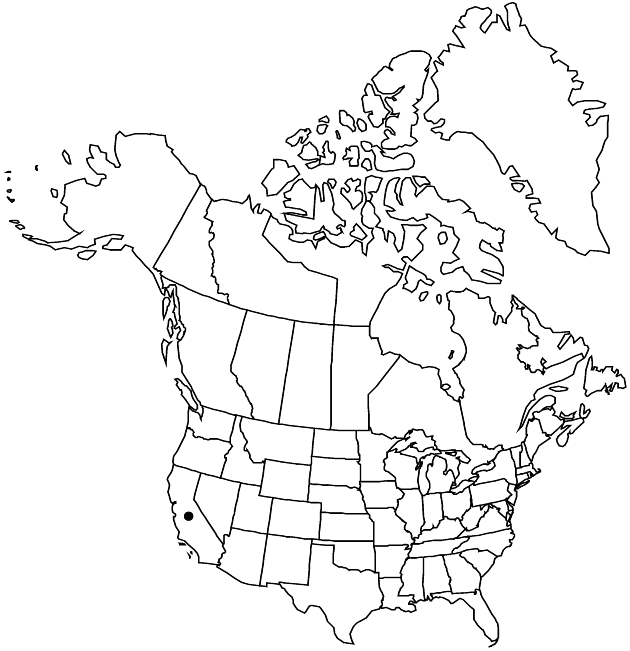Eriophyllum latilobum
in N. L. Britton et al., N. Amer. Fl. 34: 94. 1914.
Perennials or subshrubs, 30–60 (–90) cm. Stems erect (woolly). Leaves (proximal alternate): blades rhombic to obovate, 2–6 cm, 1-pinnately lobed (lobes 3–5, ± triangular), ultimate margins entire, revolute, abaxial faces loosely woolly, adaxial glabrate (distal leaves gradually reduced in size and lobing). Heads 2–5 (–10) in corymbiform arrays. Peduncles mostly 2–7 cm. Involucres broadly campanulate, 5–6 (–7) mm diam. Phyllaries 6–10, distinct (ovate, carinate, apices acute). Ray-florets (6–) 8–10 (–13); laminae yellow, 6–10 (× 4.5–5) mm. Disc-florets 40–75; corollas 3–4.5 mm. Cypselae 2–3 mm; pappi of 4 cuneate to oblanceolate scales 0.3–1 mm alternating with 4 shorter scales (in disc cypselae, disc pappi longer than ray pappi). 2n = 32.
Phenology: Flowering Apr–Jun.
Habitat: Usually shady sites, oak woodlands
Elevation: 100–200 m
Discussion
Of conservation concern.
Eriophyllum latilobum combines characteristics of E. confertiflorum var. confertiflorum, with which it sometimes mingles, and E. lanatum var. arachnoideum. It may have originated by hybridization between them (L. Constance 1937; P. A. Munz 1959).
Selected References
None.
